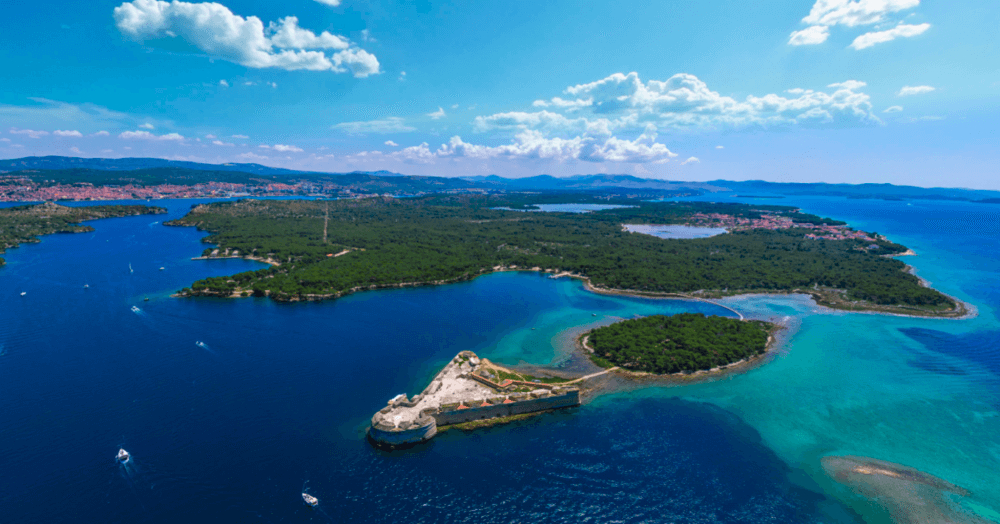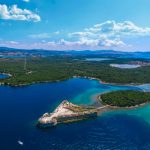June the 7th, 2024 – Šibenik fortresses are something worth stopping to look at and admiring, here’s what makes them stand out in the crowd.
Šibenik is surrounded by some of the most distinctive waters in Dalmatia. To the city’s northeast, the great Krka river drops over gushing waterfalls, meeting Cikola river in the epic Krka National Park. Thereafter, it flows first into Lake Prokljan, then the bay of Šibenik. Around the water’s edge in Šibenik, people enjoying in bars and restaurants. Or, in warmer months, sunbathing and swimming in the sea.
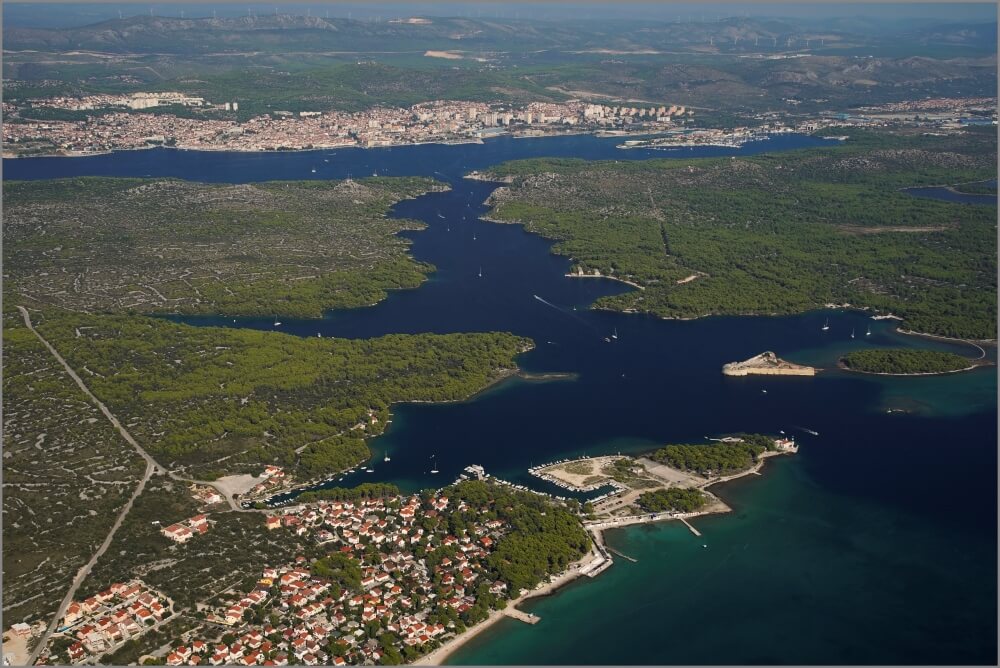
And yet, these special waters are not the only thing that makes Šibenik unique. There’s much more to this city than just the sea. Not least, the unique Fortresses of Šibenik.
Actually, it’s not that unusual to find a fortress, castle or fortifications in Croatian cities. After all, for several hundred years, this was the frontline of European defense against the invading Ottoman empire. However, Šibenik is unique within the entire Balkan region to have not one, but four fortresses from that era. Not only are they very well preserved, but also they have been completely renovated and thoroughly modernized.
Surprising multimedia and fascinating digital content now combine with fantastic views and unique architecture to draw visitors to the Fortresses of Šibenik. Subsequently, the four Fortresses of Šibenik now make up an unmissable part of any visit to the city.
an introduction to ŠIBENIK fortresses, beginning with: ST. MICHAEL’S FORTRESS
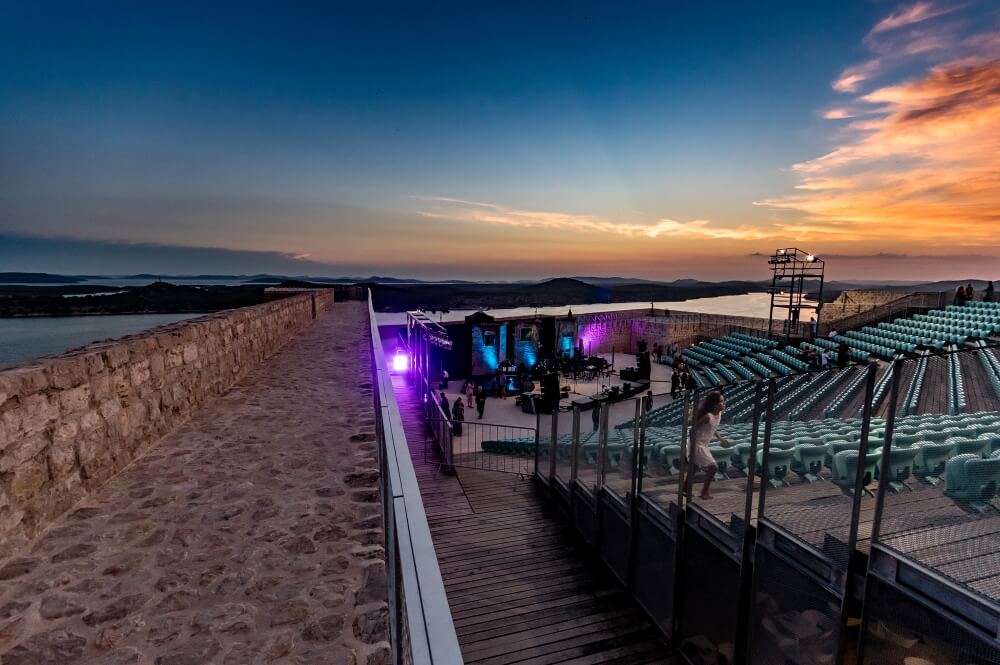
The oldest of the four fortresses, the iconic St. Michael’s is today known as one of the most prestigious open-air concert stages on this side of the Adriatic. But, it also a place where you can learn fascinating history via spectacular modern technology. Deep within the fortress, 3D mapping techniques make 15th-century water tanks spring to life. This vivid display will transport you through centuries of exciting Šibenik history, including the story of St. Michael and the dragon.
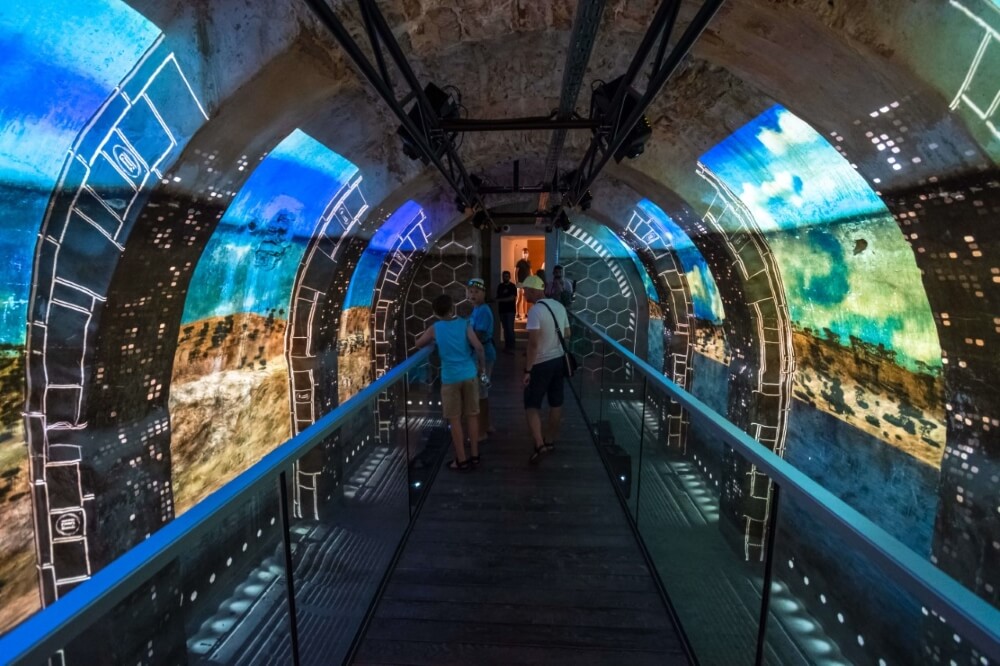
Barone FORTRESS
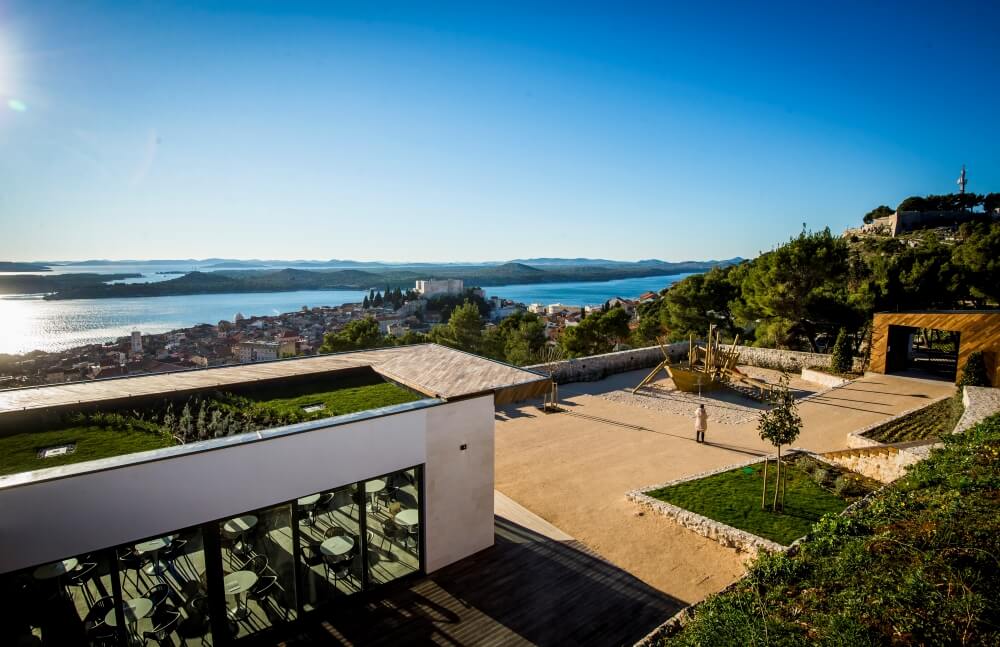
The latest of the four Šibenik fortresses to be renovated, in Barone Fortress you get a whole new dimension of reality. Actually, Barone Fortress successfully repelled the fiercest attacks of the Ottomans in the 17th century and therefore changed the course of history in this area. Via augmented reality (AR), you can relive the sights and sounds of these key moments in European history. After the thrill of experiencing the battles, you’d be well advised to take a breather on the Barone Bar’s terrace. There, you can enjoy views of the entire city, while any younger visitors can have fun on the children’s playground.
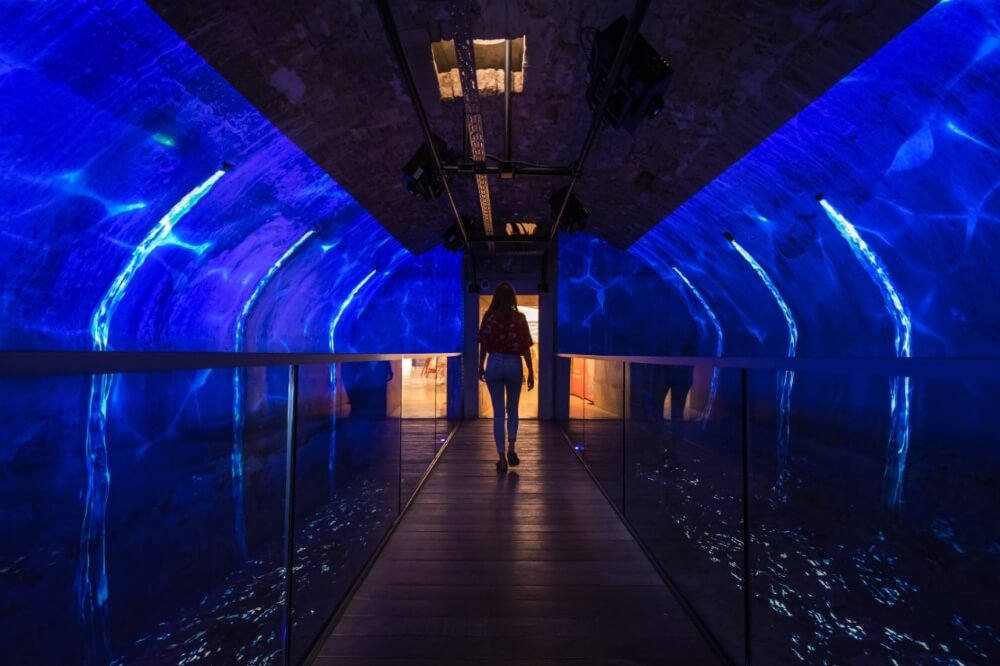
ST. NIcholas’ FORTRESS
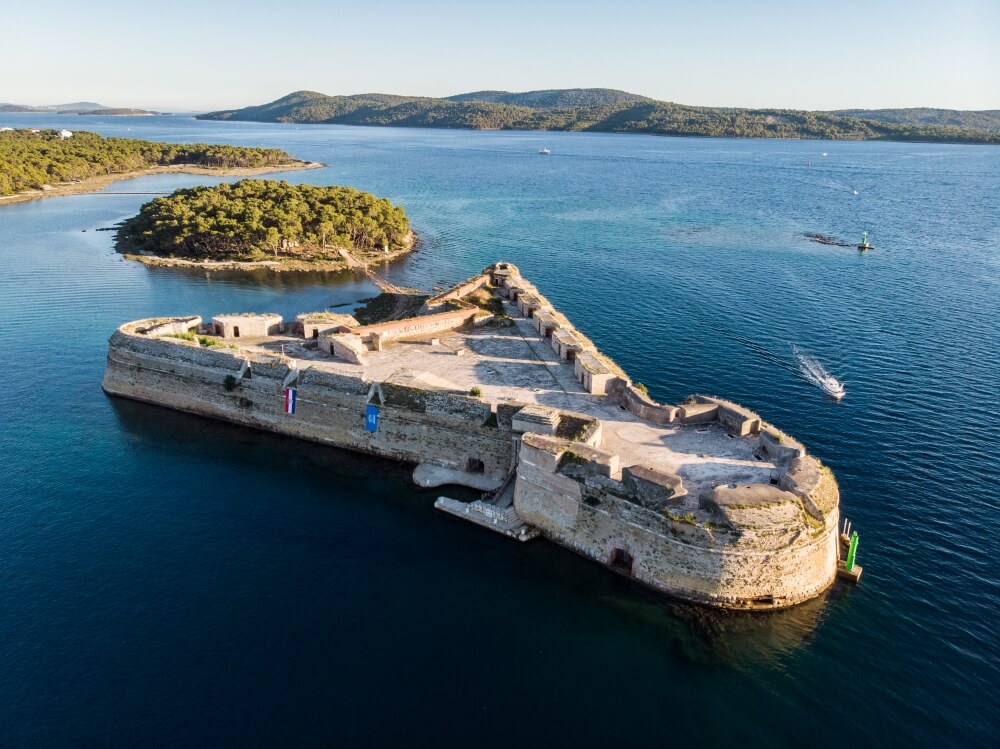
Within the scope of the Šibenik fortresses, St. Nicholas is unique. Not only is it the only one that sits on its own island within the sea, but also is a unique Renaissance-style Venetian fortification. As such, it is protected as a UNESCO monument of world architectural heritage.
The fortress was built on the island of Ljuljevac, in the Channel of St. Ante, where the waters of Šibenik bay meet the Adriatic. Owing to its protected status, the best way to access the fortress is on an official tour. Lasting around two hours, the tour takes you from Šibenik down the channel by boat. After arriving at the fortress, you’re guided rounded the structure on a tour detailing the architectural highlights and history.
ST. JOHN’S FORTRESS
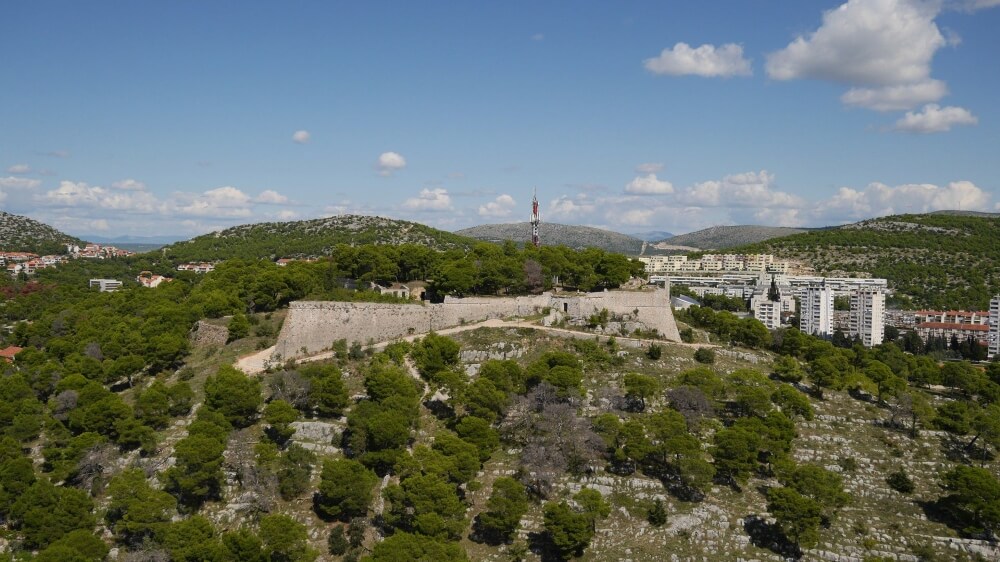
The medieval church of St. John the Baptist that once stood on a hill, north of Šibenik’s historical centre, dates to at least 1444. It is around this church that St. John’s Fortress rose up. Naturally, it’s also where the name comes from. In early 1646, when it was speedily built, alongside its peers, it helped save the city from the Ottomans. Later, it continued to be used by resident armies all the way up until the times of Yugoslavia. Today, St. John’s is the last of the Fortresses of Šibenik to be undergoing reconstruction. Its completion is imminent and its official reopening is planned for September 2021.
Three of the Šibenik fortresses are included in the pan-European Fortresses of FORTITUDE project, which links significant sites in Croatia to some in Montenegro and Bosnia. If you want to know more about that project – and learn a little more about the history of some Šibenik fortresses, then look here.

